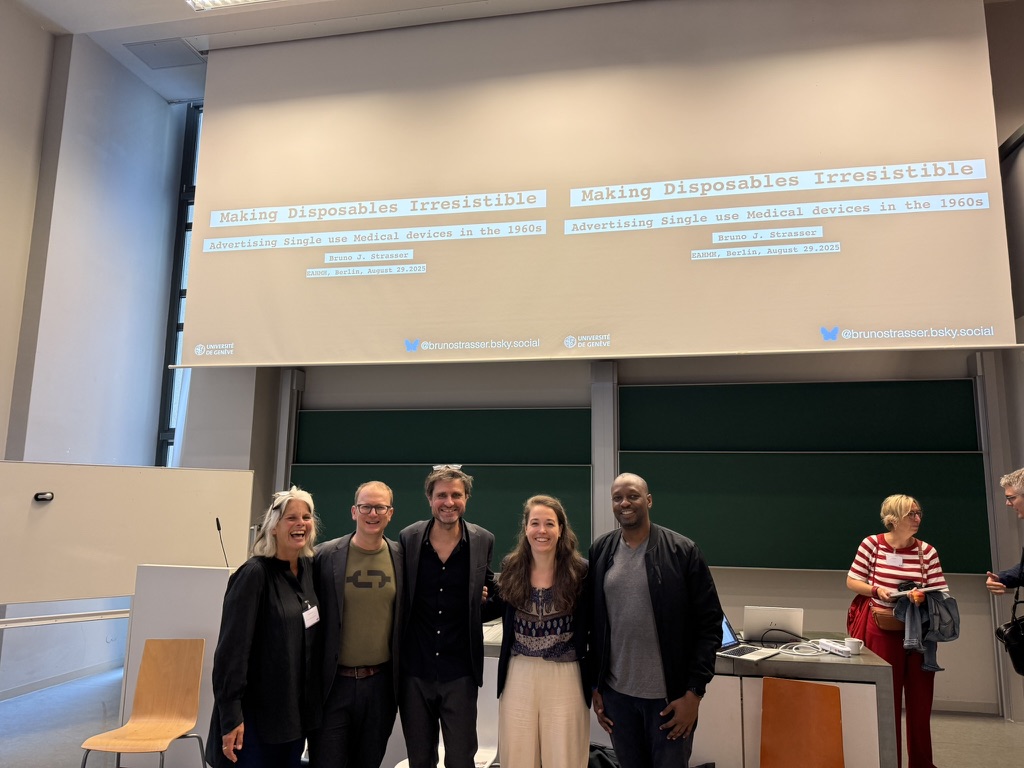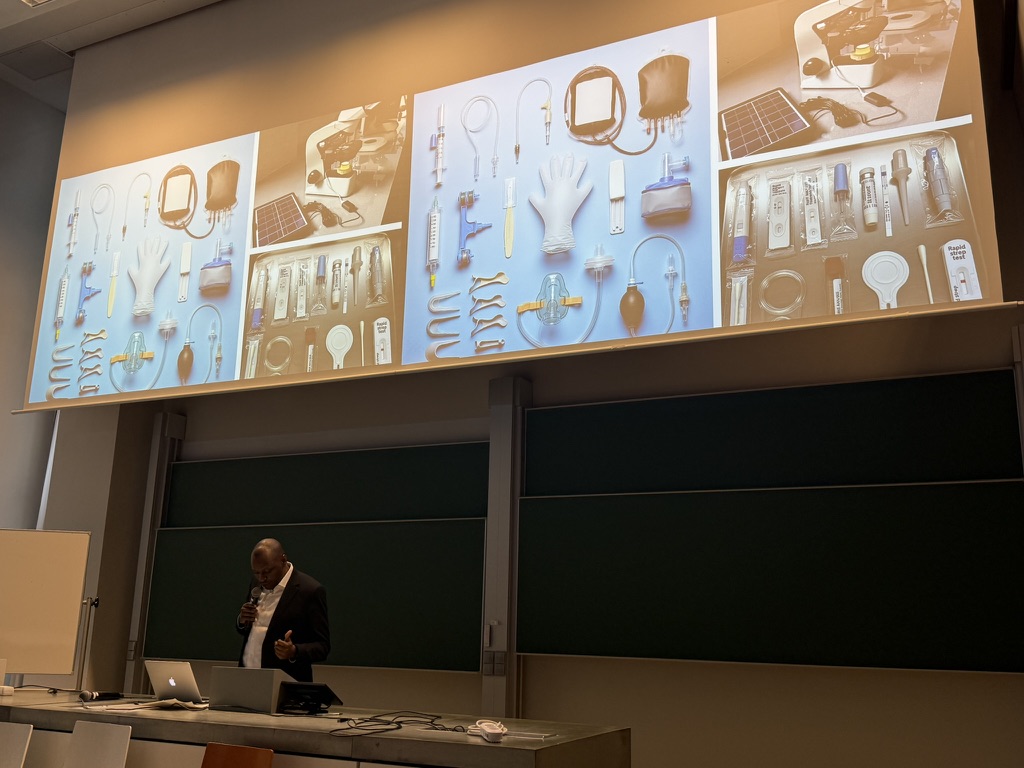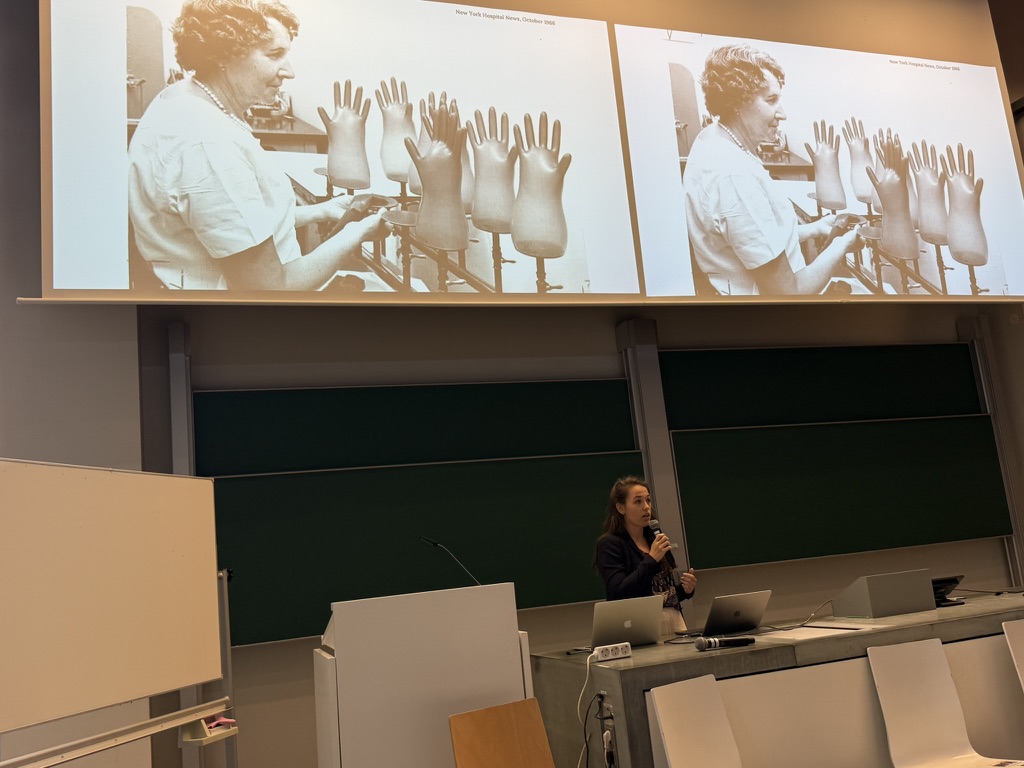The Plastic Hospital: How Healthcare Learned to Throw Things Away

Group photo with the team!
The 2025 European Association for the History of Medicine and Health (EAHMH) conference took place at the Humboldt University in Berlin, 26–29 August 2025. As part of the programme, After the Single Use researchers organised a panel to further the conversation on disposables in healthcare within the wider community of historians of medicine.
The first session focused on medical waste and the disposal of single‑use devices. Jeremy Greene’s paper, ‘How to dispose of the disposables? Single‑use plastics and the making of medical waste’, showed how the shift from reusable to disposable devices in the USA in the 1960s created new challenges for hospital managers, both in handling the sheer volume of waste and in addressing the toxicity of plastic compounds. Jeremy highlighted how manufacturers of single‑use items responded to these problems by creating a new market for waste disposal technologies. Peter Mangesho’s paper, ‘Incineration of medical waste in Tanzania: Past, futures and the plight of single‑use medical devices’, outlined his coming research for this project, highlighting the debates over, and challenges posed by, waste disposal infrastructures. Peter emphasised the recent sharp rise in the use of single‑use devices and the shift from landfills to incineration as the dominant method of waste disposal in Tanzania, along with attendant health and environmental risks.

The second session focused on medical device sterilisation and advertising of disposables. My paper, ‘When sterilisation was modern: Labour and infrastructures of reuse in mid‑20th century hospitals’, focused on the USA and Switzerland. I highlighted how sterilisation had been a major infrastructure enabling the reuse of medical devices. I argued that by making the cost of sterilisation more visible, the centralisation of sterilisation facilities in hospitals paradoxically favoured the transition to disposable devices, a process reinforced by the adoption of large‑scale sterilisation facilities by the manufacturers of single‑use devices. Bruno J. Strasser’s paper, ‘Making disposables irresistible: Advertising single‑use medical masks in the 1960s’, analysed disposal advertisements in USA hospital and nursing journals. Bruno demonstrated how industries and hospital managers promoted disposables as safer, cheaper, and more convenient than reusables. In fact, for the experts at the time, disposables were neither safer or cheaper; nor were they more convenient, except for hospital managers attracted by the promise of simplified logistics and reduced labour costs.

Both sessions opened wider conversations between the participants and the panellists along with Anne Kveim Lie, who gave a provocation titled, ‘From Hospital Sterilisation to Global Production Networks: The Hidden Costs of Disposability in Medicine’. The topics addressed sparked strong interest, drawing many participants and lively discussions across both sessions.
Beyond the panel, our team members launched two books during the conference. Bruno introduced The Mask: A History of Breathing Bad Air (co-authored with Thomas Schlich), which traces the history of masks - from the mythical plague doctor’s mask to 20th century disposable masks. Anne and Jeremy launched their edited collection: Medicine on a Larger Scale: Global Histories of Social Medicine (co-edited with Warwick Anderson).
Attending the conference as a PhD student was a rich and stimulating experience. It was a great opportunity to learn about diverse areas of research in the field and meet other researchers while exploring Berlin’s medical history. Special thanks to Dora Vargha and her team for their great organisation and support of Early Career Researchers!
Read the panel summary here and read the individual paper abstracts in our Resources section.
